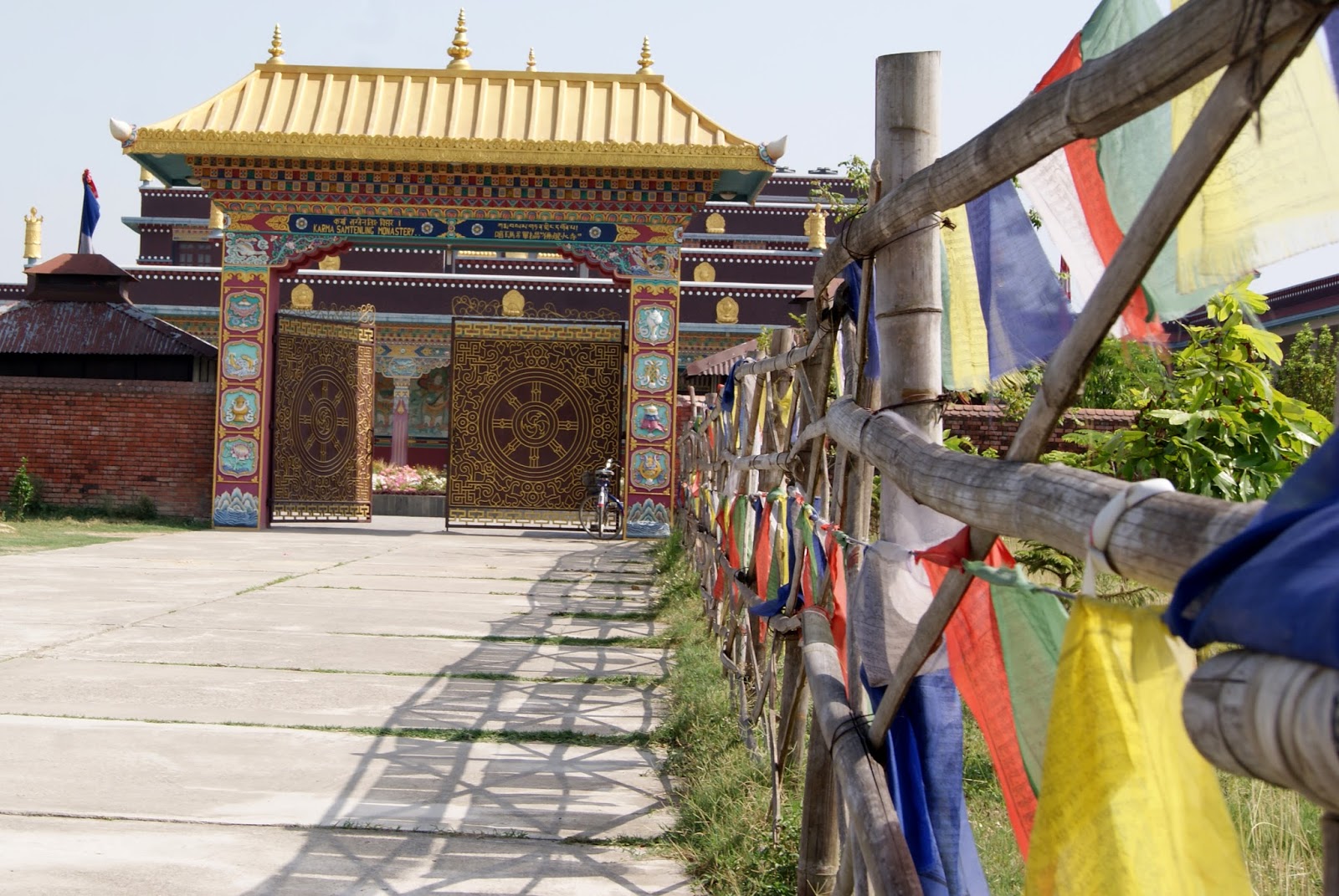Lumbini, just near the Nepal-India border, isn’t much to
look at. A couple of dusty streets, a handful of hotels, a smattering of
restaurants and convenience stores make up the majority of the town. But what
makes the town auspicious, what draws those who come here, happened some 2,500
years ago, give or take.
This is the place where it is believed that Siddhartha
Guatama, the Buddha, was born.
Despite the fact that the deification of the Buddha and the
material worship that tends to follow is fairly counter to the Buddha’s
teachings, Lumbini is considered to be a holy place by Buddhists worldwide.
Temples, stupas, and monasteries abound. Theravada Buddhist
organizations from Thailand, Myanmar, Sri Lanka, and Cambodia show off their
various architectural styles. On the opposite side of a long, narrow reflecting
pool, the Mahayana school of Buddhism is represented by places as far-flung as
China, Vietnam, South Korea, Germany, and Austria, as well as semi-resident
Tibet.
The Maya Devi Temple, ruins of an ancient temple believed to
be built on the exact spot of the Buddha’s birth, is also considered holy by
Hindus, who hold that the Buddha is an incarnation of Vishnu. Hinduism is a bit
of a grab bag like that in general, and Lumbini is a veritable international religious sampler plate anyhow.
We were fortunate enough to have our trip to Lumbini coincide
with the massive pilgrimage holiday of Buddha Jayanti, the celebration of the
Buddha’s birth.
For the holiday Lumbini exploded with the sounds and colors
of pilgrimage. Sari-clad Indians and Nepalis, Buddhist and Hindu alike, piled
into the tiny city by the bus- and carload. Duffle bags and firewood were
transported atop heads. Hotels set up stands to distribute free water and juice
to combat the heat. Blessings were sold and handed out in every direction. At
dusk, devotees ignited hundreds of butter lamps around the holy pond at the
Maya Devi temple.
And though it wasn’t very true to the teachings of the
Buddha, it was a beautiful thing to witness.









